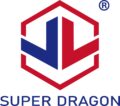Dry sandpaper, often overlooked in comparison to its wet counterpart, stands out as a versatile and efficient abrasive tool in various industries. This article explores the distinct advantages of dry sandpaper, shedding light on its applications and why it holds a significant place in the toolkit of craftsmen and manufacturers alike.
- Convenience and Accessibility: Dry sandpaper eliminates the need for water, making it more convenient and readily accessible for users. This simplicity in application allows craftsmen to work in diverse environments without the constraints of water availability, making it an ideal choice for on-the-go sanding tasks.
- Less Mess and Cleanup: Unlike wet sanding, which can generate a slurry of water and abrasive particles, dry sandpaper produces minimal mess. This characteristic not only simplifies the cleanup process but also reduces the risk of potential damage caused by water exposure, particularly in woodworking or metalworking applications.
- Versatility in Applications: Dry sandpaper is highly versatile and suitable for a wide range of materials, including wood, metal, plastics, and composites. Its adaptability makes it an essential tool in woodworking, automotive refinishing, and other industries where various materials need precision sanding.
- Increased Control and Precision: The absence of water in dry sanding provides users with increased control and precision over the sanding process. Craftsmen can achieve finer finishes and maintain better control over material removal, critical in applications where accuracy and surface quality are paramount.
- Faster Drying Times: Dry sandpaper significantly reduces drying times compared to wet sanding. This attribute is particularly advantageous in time-sensitive projects, allowing craftsmen and manufacturers to expedite their processes without compromising the quality of the finished product.
- Compatibility with Power Tools: Dry sandpaper is well-suited for use with power tools such as orbital sanders and belt sanders. This compatibility enhances the efficiency of sanding operations, making it an attractive choice for large-scale projects where the speed and power of electric tools are essential.
- Cost-Effectiveness: Dry sandpaper is generally more cost-effective than its wet counterpart. The elimination of water-related components reduces production costs, making it a budget-friendly option for those seeking high-quality abrasives without breaking the bank.
In the realm of abrasive tools, dry sandpaper emerges as a reliable and advantageous choice, offering convenience, precision, and versatility across various applications. Whether in the hands of craftsmen shaping intricate woodwork or manufacturers refining metal surfaces, the distinct benefits of dry sandpaper make it a valuable asset in achieving optimal results efficiently and cost-effectively.

